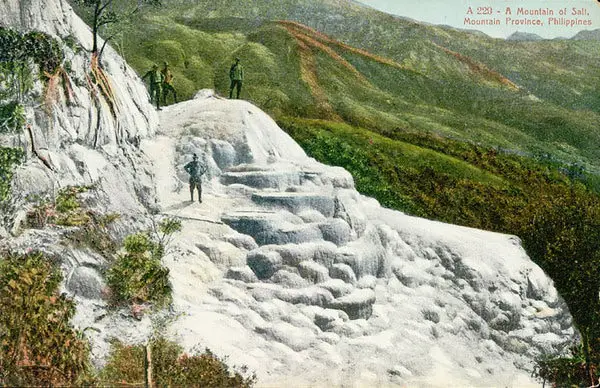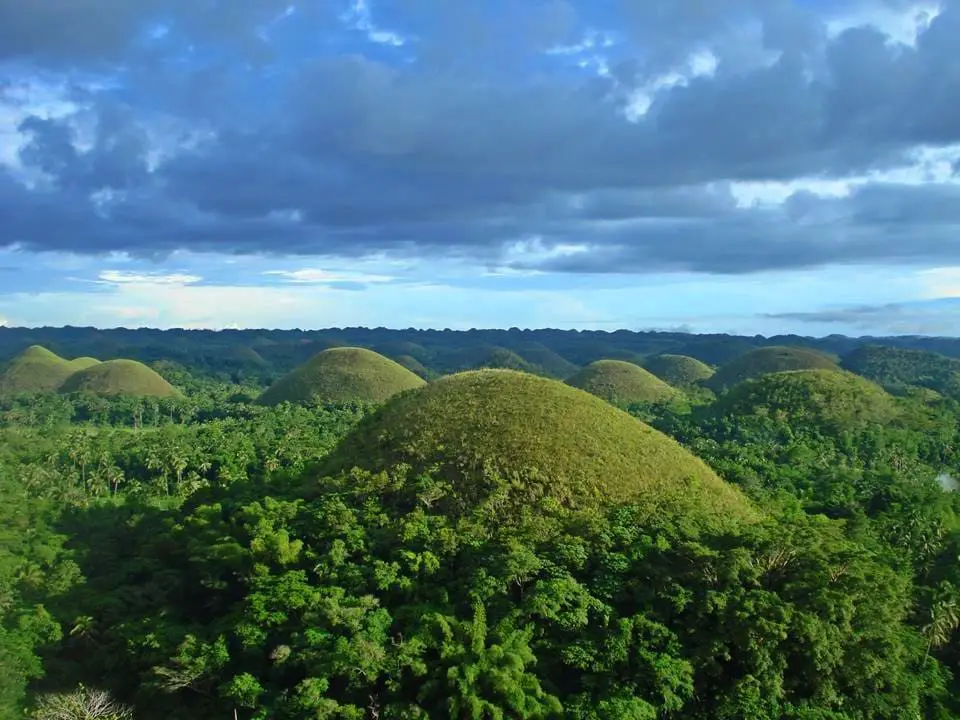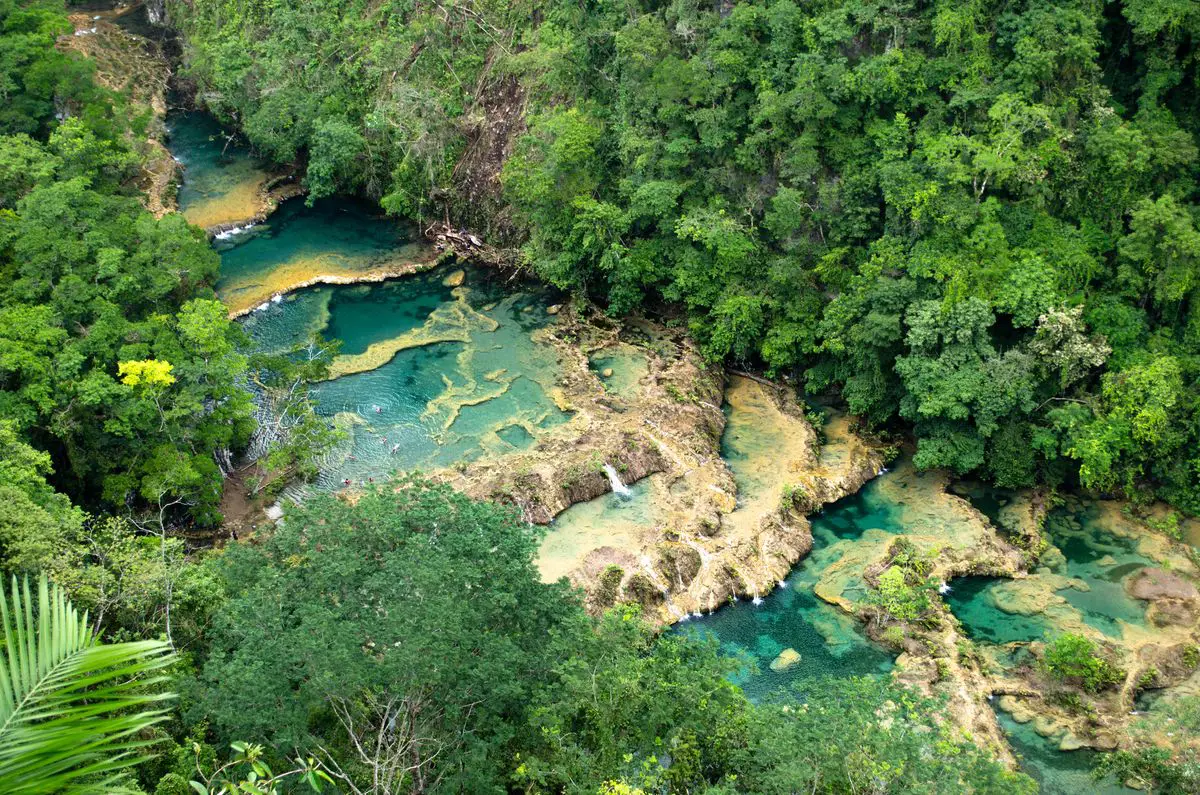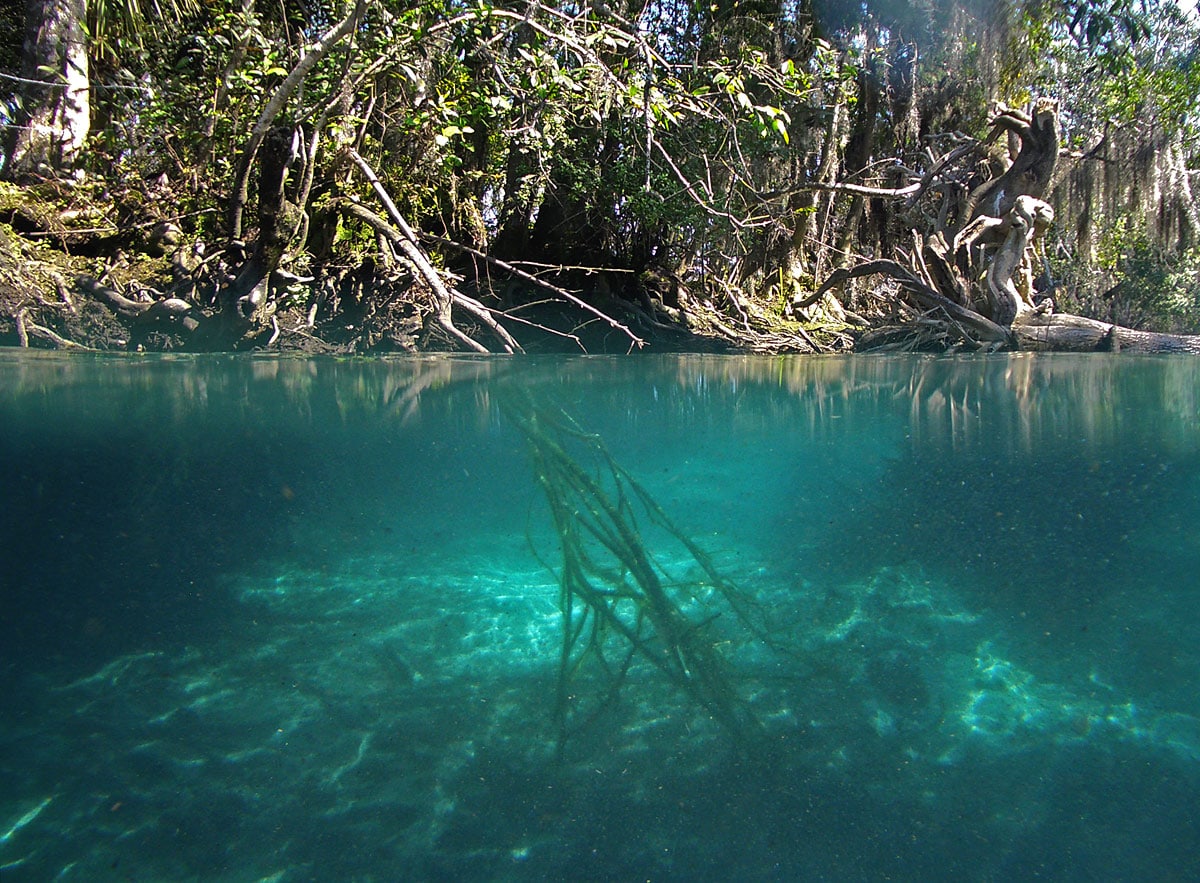World 🢖 Asia 🢖 Philippines
Spring tufa, travertine and other formations 🢔 Springs 🢔 Geological wonders 🢔 Categories of wonders
Wonder
Salinas Salt Springs

 In short
In short
Once upon a time there was unique monument of nature near Bambang town – a snow-white mountain of travertine formed by a powerful spring – Salinas Salt Springs…
 31.8%
31.8%
GPS coordinates
Location, address
Luzon, Nueva Vizcaya Province, Bambang municipality, Salinas barangay, some 10 km west from Bambang (15 km by road), Salinas village
Map of the site
If you see this after your page is loaded completely, leafletJS files are missing.
 In detail
In detail
The lost rimstone pools
The glistening white hill with rimstone pools (just similar to the fantastic rice terraces in nearby Ifugao) attracted the attention of people since ancient times. Nearby village – Salinas – got its name from it. This beautiful spring turned into a major tourist attraction.
Unfortunately since the earthquake on the 16th July 1990 this spring has changed its course and the white mountain has turned into a dirty grey hill covered with inscriptions and graffiti. Most likely the tectonic forces tightened some fissures and water found other ways.
Happily there have been found two more springs with active travertine formation processes in the nearby Macalong barangay, Bambang.
In 2004 local people found out that water is flowing again from the base of former springs. By this time the rural people in this part of Luzon were overwhelmed with the cultivation of tilapias – small, tasty fish diversifying the daily meals of Filipinos.
In spite of the popular belief that water is too salty for freshwater fish, local enthusiasts tried their luck in artificial fishponds with spring water. This was a complete success – fish grew well and were a lot tastier than elsewhere. In other pools, the meat of fish has got a soily taste but here the salts are cementing the ground and the water is cleaner.
Currently more than 30 fishponds have been arranged and in this way, the people of Salinas got compensation for the disruption of former tourist landmarks.
Salinas Salt Spring is a protected monument of nature since 2000.
Popular myths
Often there are met two faulty myths regarding Salinas Salt Spring:
- Many believe that Salinas Salt Spring is formed by the salty water of Pacific Ocean which miraculously travels 75 km inland and is raised 400 – 500 m above the sea level. This is wrong. Deep artesian water in most areas of the world is salty, often a lot saltier than the ocean. And it happens that this salty water comes up through fissures, and, as it reaches the surface, it precipitates the salt.
- Cupola and terraces are formed by clean table salt (sodium chloride). Wrong – if this would be pure table salt, it would dissolve in the wet climate of Luzon very quickly. Salinas cupola and terraces are formed by travertine which for the most part consists of limestone. Water in the springs though is slightly salty – thus there might be some rock salt involved as well.
 Linked articles
Linked articles

Wonders of Philippines
The charming Philippines in many respects represent the true Southern tropical paradise. This archipelago consists of thousands of diverse islands and the wealth and diversity of the countless landmarks here are hard to grasp.

Spring tufa, travertine, and other formations
This category includes very diverse landmarks that have one thing in common: all of them are created by springs that are depositing chemical sediments – silica, carbonates, salt, or other chemical compounds.

Springs
Powerful natural freshwater springs belong to the most fascinating monuments of nature. Even more exciting is the diversity of unusual springs – mineral springs, hot springs, submarine springs as well as the unusual black smokers. Especially beautiful are such natural rarities as travertine, silica, or salt terraces created by warm and hot springs and, especially, geysers.
 Recommended books
Recommended books
Travertine
Travertine is an excellent contribution, condensing the large literature base on travertine into one book. The book’s strength is the thorough, well-organized, and interdisciplinary survey of travertine, reflecting the author’s extensive experience with the topic. Each chapter in this book provides an excellent starting point and literature review to launch more detailed inquiries about travertine and travertine depositing systems.
The Rough Guide to the Philippines
This in-depth coverage of the Philippines’ local attractions, sights, and restaurants takes you to the most rewarding spots—from Manila to the beaches of Boracay and the rice terraces of Banaue—and stunning color photography brings the land to life on the pages.


